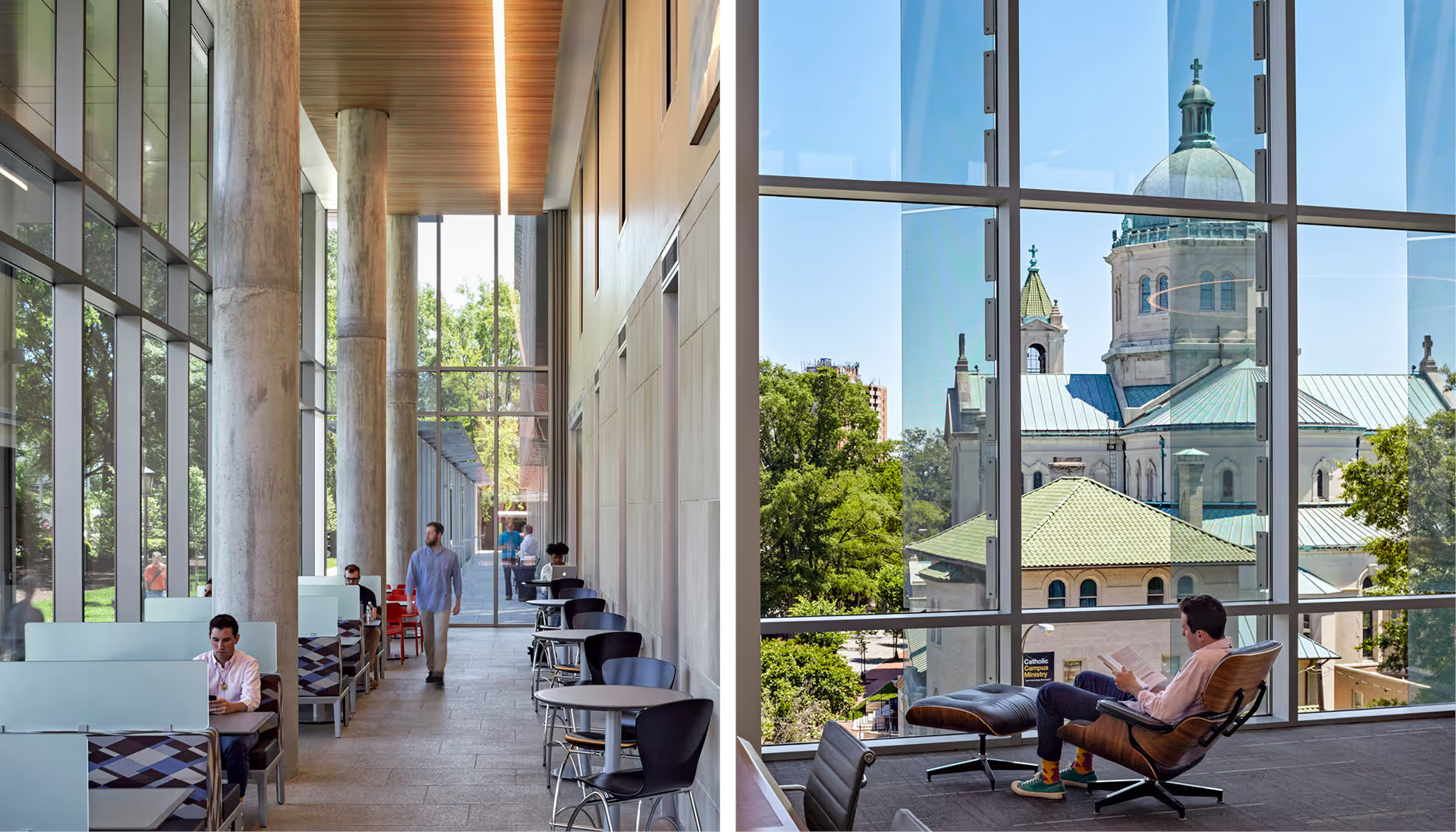
Virginia Commonwealth University, James Branch Cabell Library
At Virginia Commonwealth University (VCU), the James Branch Cabell Library has evolved from a precast concrete structure into an academic center serving both university students and Richmond community members. As the region's largest research institution, the building combines preservation of its original architecture with expanded spaces for study, collaboration, and content creation.
Engineering Performance
The renovation preserved and enhanced the building's inherent efficiency. The original poured concrete mass absorbs and releases heat throughout the day, regulating interior temperatures. A high-performance envelope and reflective roof system control solar gain, while energy recovery systems reduce consumption 22 percent below American Society of Heating, Refrigerating, and Air-Conditioning Engineers standards.
An on-site cistern captures and redirects rainwater to the building's cooling towers, reducing potable water consumption and decreasing pressure on Richmond's municipal sewer system.
Illumination and Flow
Building on these performance improvements, the design prioritizes natural light throughout. A sunken lightwell illuminates the basement, while expanded windows frame campus views. Multi-story spaces connect different floors visually, creating intuitive pathways through the building. Wooden panels with programmable LED strips mark circulation paths and change colors during special events, helping visitors navigate while marking academic celebrations.
Contextual Design
These interior lighting strategies extend to the building's exterior presence. Limestone panels complement Richmond's civic buildings, while vertical glass fins extend the original concrete elements' aesthetic. These fins regulate solar heat gain in reading rooms, creating comfortable study environments throughout the day.
The northeast corner's glass walls connect interior spaces with the surrounding campus. Students work in daylight-filled rooms with views of the cathedral and campus grounds. The former loading dock now serves as a gathering place, with integrated seating and a protective colonnade.
Academic Programming
The interior organization responds to varied academic needs across each floor. The second floor contains instruction rooms for active learning. The third floor combines quiet study areas with a 250-seat presentation theater. The fourth floor provides silent reading rooms designated for graduate students, faculty, and undergraduates.
Traditional reference desks have been replaced by consultation pods where staff trained in circulation, reference, and technology assist students directly. These adaptable service points accommodate changes in library services.
Making and Media
Supporting the library's academic mission, The Workshop occupies the lower level, equipped with 3D printers, laser cutters, and digital editing stations. Here, artists collaborate with engineers and social scientists, creating projects that cross traditional academic boundaries.
A two-story LED installation—the Vitrine—displays student artwork and campus information on the plaza-facing wall, establishing a visual link between interior activities and public space. This digital canvas completes the building's transformation from a simple repository to a center for both accessing and creating knowledge.
The renovated Cabell Library demonstrates how architectural adaptation can honor original design while expanding a building's ability to serve its academic community.








































